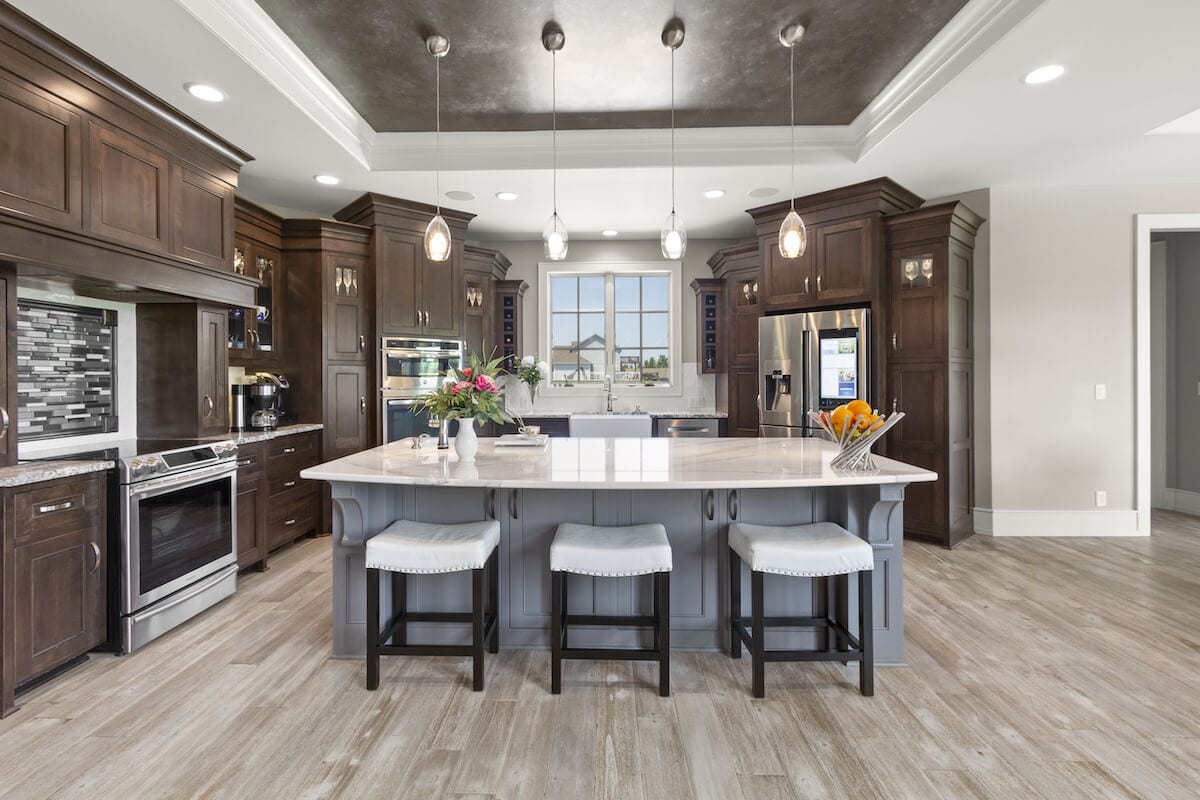
We’re always using our kitchen floors, which is why it’s important to take the time to choose the best flooring for your kitchen. The kitchen is one of the busiest rooms in a house, if not the busiest. It’s where more spills happen from hot and cold liquids, and it’s where you’ll find the most crumbs. It’s a place where hungry kids and pets like to hang out because that’s where the treats are.
The kitchen floor supports the weight of our heaviest appliances. We want floors that can handle all of this and look good while they’re at it. And as with any kitchen remodeling work, we want to get the most value for our money. Let’s take a look at the pros and cons of the most popular flooring options.
Pros

Cons
Pros

Cons
Pros

Cons
Pros

Cons
Pros

Cons
Whether you’re interested in the classic comfort of wood or the modern practicality of vinyl, or you prefer low-maintenance tile, call us, and we’ll help you figure out the best flooring for you, your kitchen, and your budget.
Vinyl kitchen flooring is durable, comfortable, cost-effective, versatile, and easy to clean. It’s designed to withstand heavy foot traffic, provides padding for comfort, is available in various designs, and is resistant to water and stains.
Cork flooring is sustainable as it’s harvested without harming the trees that produce it. Additionally, old cork floors can be recycled. However, it’s essential to consider the carbon emissions during transportation when assessing its eco-friendliness.
Linoleum, while versatile and biodegradable, can be damaged by sharp objects and emits an odor for a short period after installation. Its aesthetic may not be everyone’s preference, and it requires careful installation to prevent peeling. It’s also sensitive to prolonged dampness and standing water.
Tiles are resistant to liquids, impacts, and extreme temperatures and can even outlast the buildings they’re in. Their hard nature makes them water-resistant and difficult to scratch. Properly maintained, tiles can last for centuries.
Wood flooring in the kitchen offers high ROI due to its lifetime durability, possesses a classic and timeless appearance, provides warmth and comfort, has eco-friendly variants like bamboo and reclaimed wood, and can be maintained by sanding, refinishing, and resealing to extend its lifespan.

Kimberly Villa is a recognized expert in the Home Design and Remodeling industry. Her passion for the industry is matched only by her love for sharing insights, new trends, and design ideas. Kimberly’s expertise and enthusiasm shine through in her contributions to the Kaminskiy Design and Remodeling website blog, where she regularly shares valuable information with readers.